
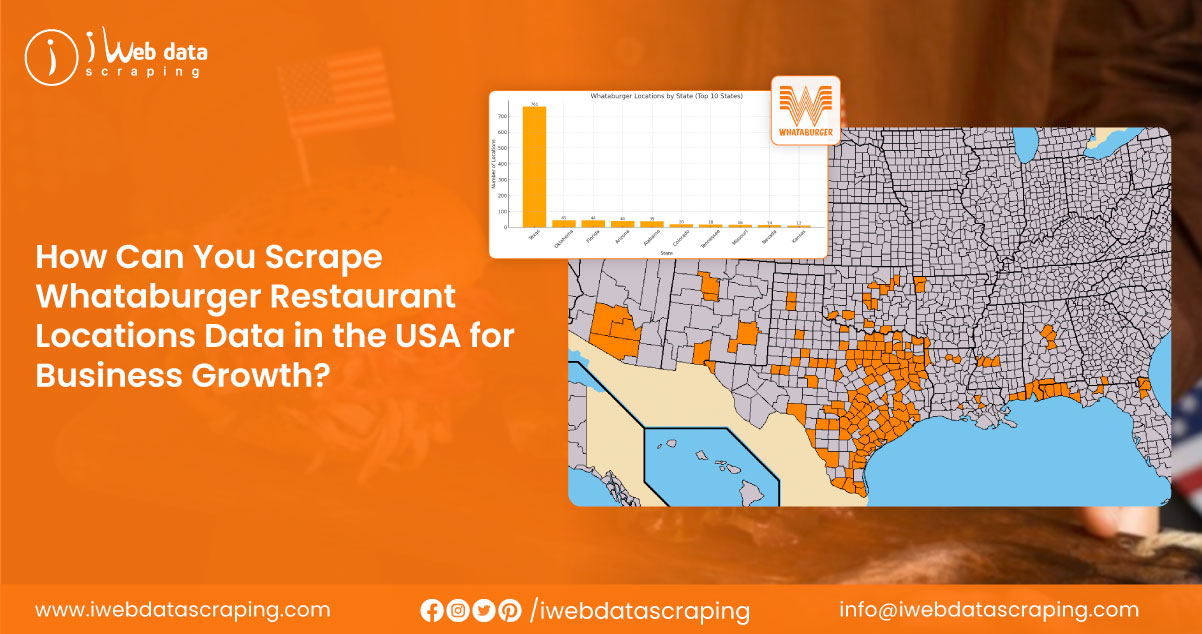
In today's fast-paced food service and analytics ecosystem, accessing structured location data from top restaurant chains is a strategic asset. A key example is the ability to Scrape Whataburger Restaurant Locations Data in the USA, offering valuable insights for businesses and researchers alike. Whether you're developing a location intelligence tool, a competitive benchmarking report, or a franchise expansion analysis, detailed Whataburger data is essential. With Whataburger Food Data Scraping Services , businesses can access high-quality datasets that reveal store distributions, regional saturation, and growth opportunities. This data supports everything from real estate decisions to marketing campaigns and delivery optimization. For delivery platforms and logistics providers, the ability to Extract Whataburger Food Delivery Data helps streamline operations, enhance customer service, and target high-demand zones. In short, leveraging accurate location data from Whataburger can fuel smarter decisions and provide a competitive edge in an increasingly data-driven market.
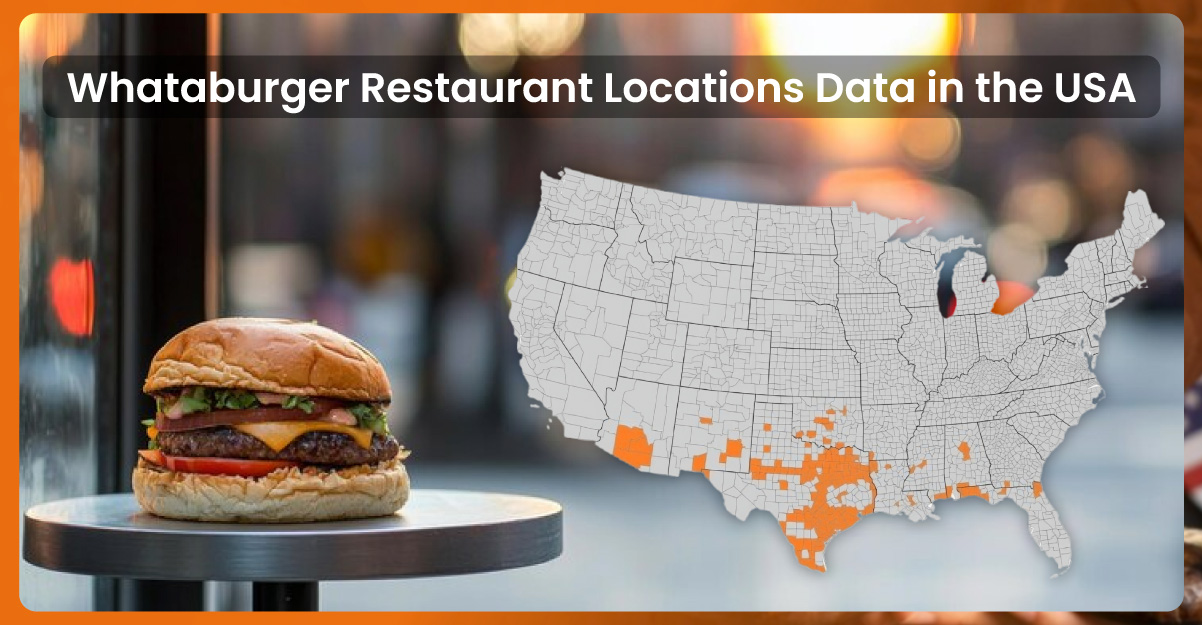
Whataburger is an iconic American fast-food chain, particularly dominant in the Southern United States. Founded in 1950 in Texas, the brand has grown into a regional favorite with hundreds of locations in over a dozen states. For marketers, real estate analysts, QSR competitors, and even delivery platforms, having access to a comprehensive dataset of Whataburger locations helps with:
Scraped data offers high-frequency, structured, and updated records, unlike general directory listings—perfect for data integration and analytics.
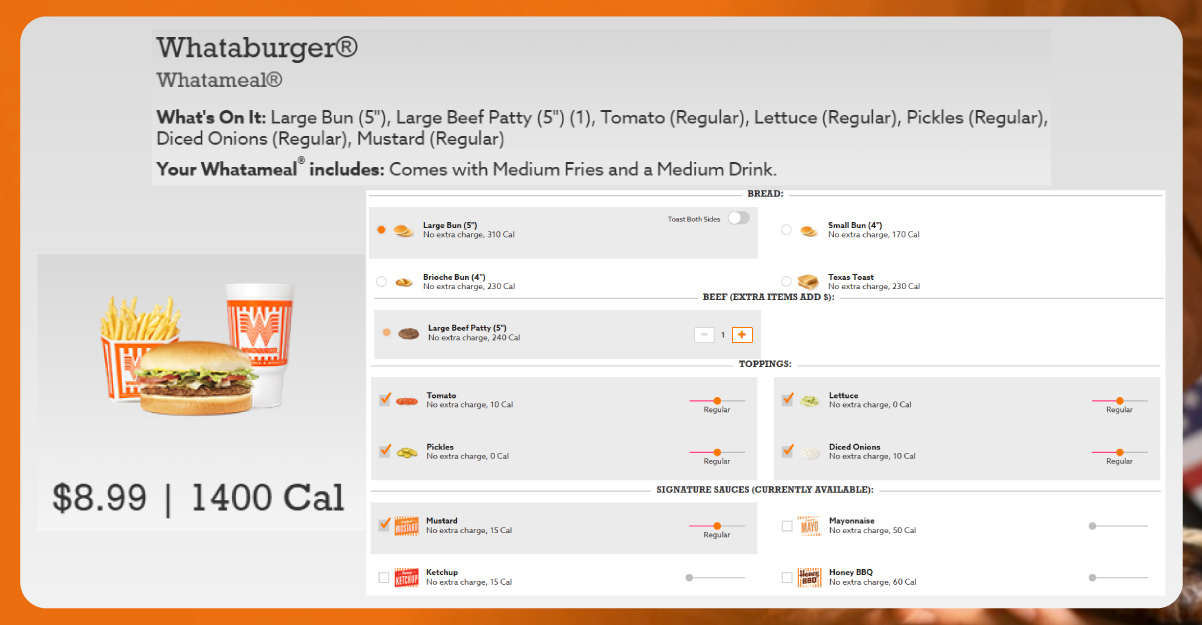
Scraping Whataburger's location information can yield rich, structured records beyond the store address. Here are the essential data points often included in a well-structured Whataburger restaurant location dataset:
1. Restaurant Name & Unique Identifier: Each entry typically includes a unique store ID or name variation Whataburger uses to classify the branch.
2. Complete Address Information
This includes:
This allows for precise geocoding and mapping tasks.
3. Latitude and Longitude Coordinates
Geographic coordinates allow developers and GIS analysts to create spatial visualizations and route optimization models.
4. Contact Information
Phone numbers and occasionally email addresses help delivery platforms, support teams, and analytics teams contact individual stores for survey or outreach purposes.
5. Store Hours
Opening and closing times for each day of the week enable time-sensitive decision-making, like identifying peak hours or delivery windows.
6. Drive-Thru and Dine-In Availability
With post-pandemic shifts in consumer behavior, drive-thru status or dine-in availability becomes a key differentiator.
7. Franchise vs. Corporate Ownership
Knowing the ownership model can help investors or business intelligence researchers examine expansion strategies and operational models.
8. Nearby Landmarks or Areas of Interest
Some datasets may include neighborhood names or proximity to shopping centers, highways, or universities. This is valuable for hyperlocal marketing strategies.
Unlock accurate Whataburger location data and boost your business insights—contact us today!
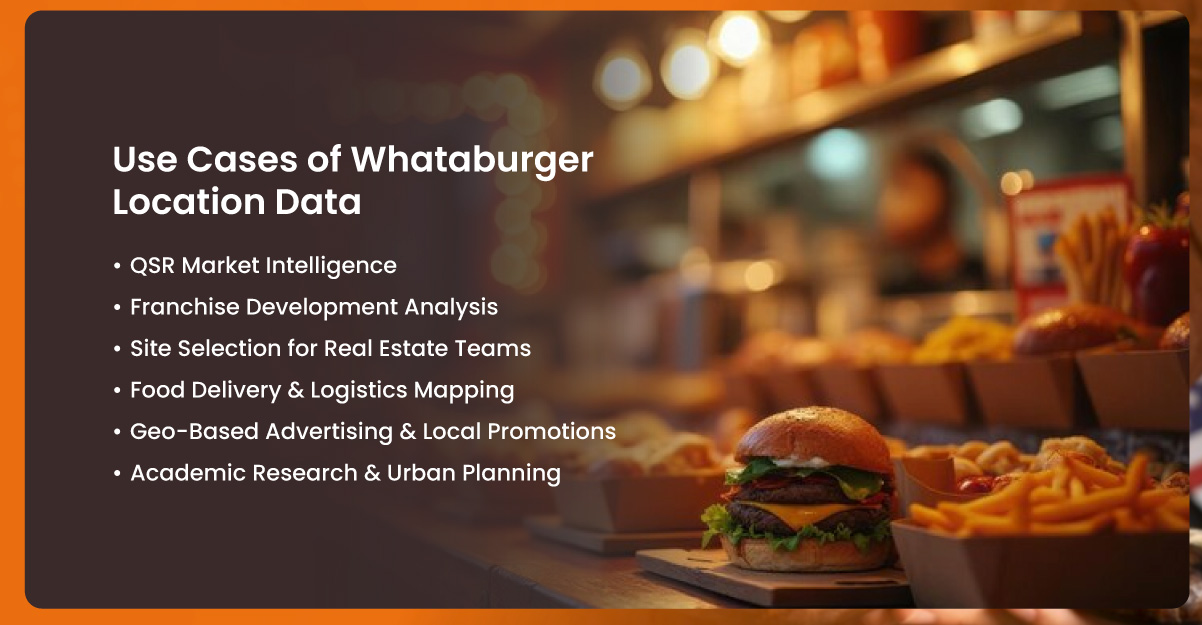
Let's explore the real-world applications where Whataburger's restaurant location data is used to drive decisions, optimize operations, and guide future expansions.
Various sectors benefit from detailed Whataburger restaurant location data. Here’s a breakdown:
| Industry | Application |
|---|---|
| Retail & QSR Analytics | Competitor analysis, expansion planning |
| Real Estate | Location feasibility, property valuation |
| Marketing & Advertising | Hyperlocal campaigns, customer segmentation |
| Logistics & Delivery | Route planning, territory mapping |
| Consulting & Strategy | Market entry, M&A analysis |
| Academia & Government | Sociological research, infrastructure planning |
The granular level of data provides both a macro and micro view of Whataburger’s physical presence and consumer reach.
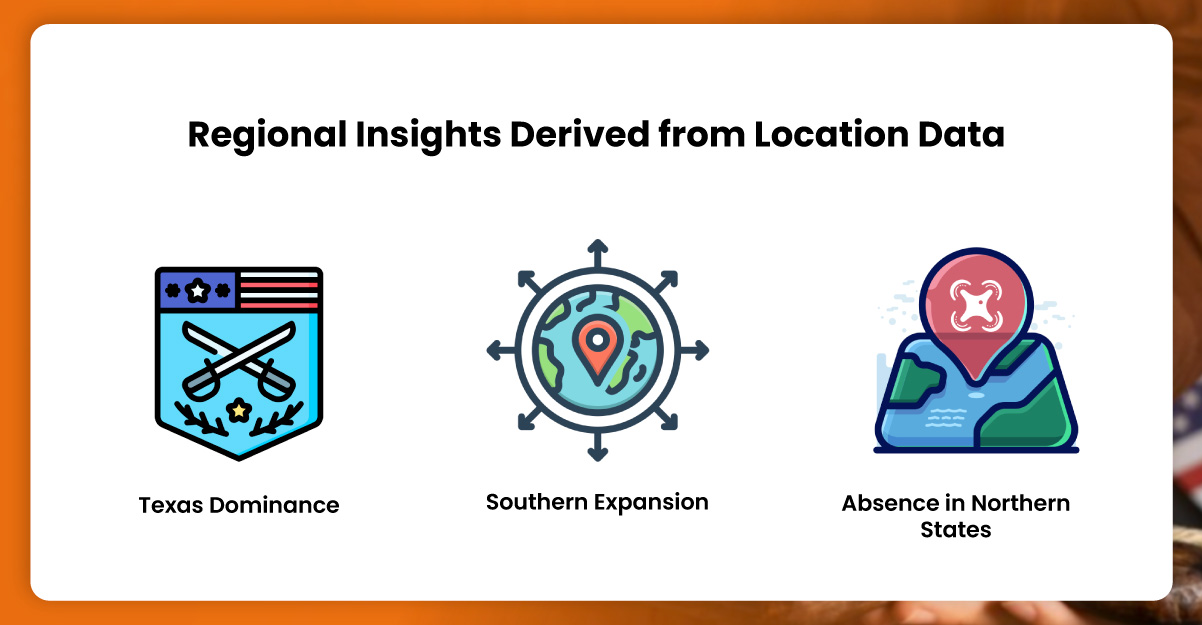
One of the biggest values in scraping restaurant location data is the ability to derive regional and state-level insights.
1. Texas Dominance
A significant portion of Whataburger locations are found in Texas, particularly in cities such as San Antonio, Houston, Dallas, and Austin. This reflects the brand’s origins and its deep-rooted customer base. Businesses leveraging Restaurant Data Intelligence Services can assess how Whataburger maintains such dominance and draw parallels for similar regional chains.
2. Southern Expansion
Recent data shows a steady expansion of Whataburger locations into Southeastern states like Georgia, Tennessee, and Alabama. This trend indicates strategic market growth, which can be analyzed using Food Delivery Data Intelligence Services to assess logistics, regional adoption rates, and performance against local competitors.
3. Absence in Northern States
Whataburger has a minimal or nonexistent presence in the Midwest and Northeast. This creates a favorable scenario for competitors with little risk of brand overlap. By analyzing Food Delivery App Menu Datasets , businesses can gauge product gaps and customer preferences in these underserved markets, identifying opportunities for entry or partnership.
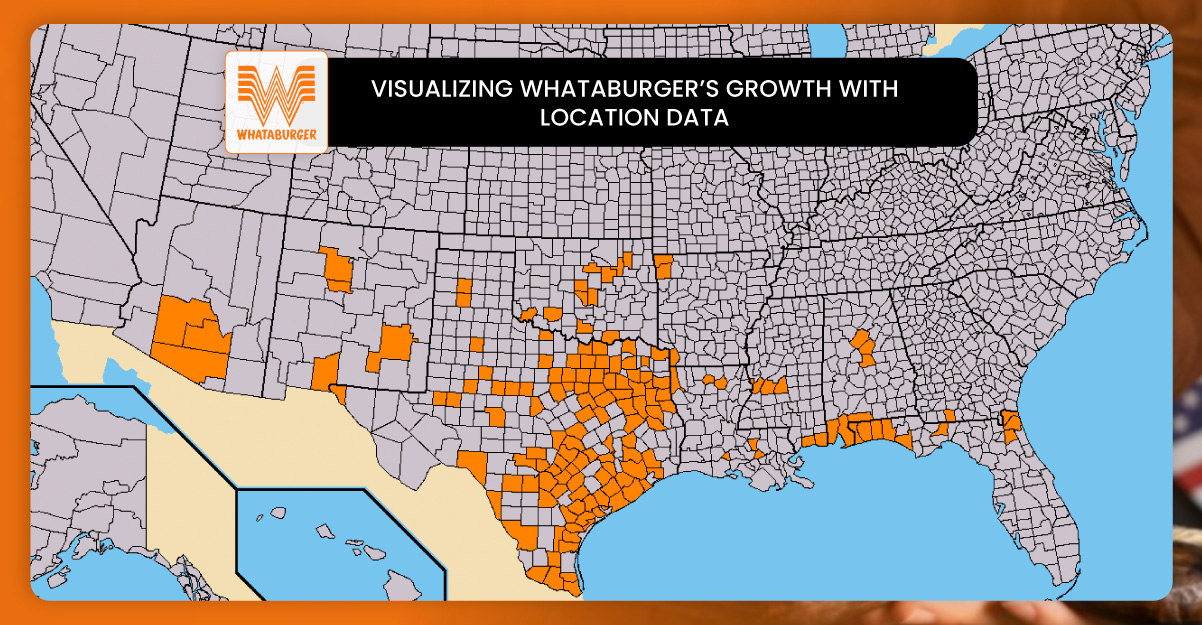
When the location dataset is used in conjunction with visualization tools like Tableau, Power BI, or Mapbox, organizations can generate dynamic dashboards that display:
This form of business intelligence supports strategic conversations and performance reviews at the executive level.
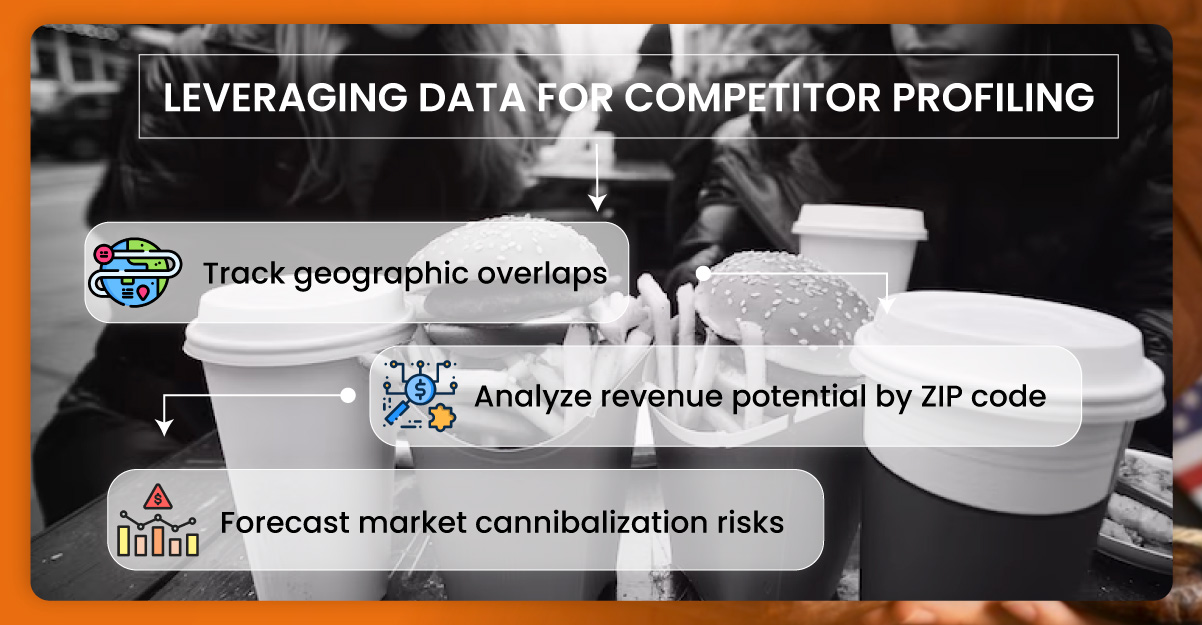
Scraped Whataburger data is often used alongside data from McDonald’s, Burger King, Chick-fil-A, and Five Guys. Competitor profiling through multi-brand analysis allows stakeholders to:
These insights become foundational for quarterly planning and investment decisions.
How iWeb Data Scraping Can Help You?
Our services deploy cutting-edge crawling technologies that intelligently navigate complex website structures to capture comprehensive and precise data without missing critical details.
We continuously monitor source websites for layout or content changes and swiftly adapt our scraping tools, ensuring ongoing accuracy and uninterrupted data flow.
By combining information from various verified sources, we cross-reference and validate data points to enhance reliability and eliminate inconsistencies.
Our scraping solutions support frequent data updates, enabling clients to access the most current Whataburger location information and avoid outdated records.
We implement customized validation checks based on client requirements, filtering out duplicates, verifying address authenticity, and confirming data completeness for trustworthy results.
Scraping Whataburger restaurant location data in the USA isn’t just about collecting addresses—it’s about gaining a strategic edge in a data-driven foodservice industry. Whether you’re planning territory optimization, enhancing delivery logistics, or executing hyperlocal marketing campaigns, structured data plays a critical role. By leveraging Web Scraping Food Delivery App Data, businesses can ensure their strategies are informed by the most current and precise location intelligence.
As QSR competition intensifies and customer behavior evolves, organizations that embrace Food Data Scraping Services to gather granular, location-rich datasets—like Whataburger’s—are better equipped to innovate, track regional market shifts, and outperform competitors with faster, smarter decisions.
Experience top-notch web scraping service and mobile app scraping solutions with iWeb Data Scraping. Our skilled team excels in extracting various data sets, including retail store locations and beyond. Connect with us today to learn how our customized services can address your unique project needs, delivering the highest efficiency and dependability for all your data requirements.